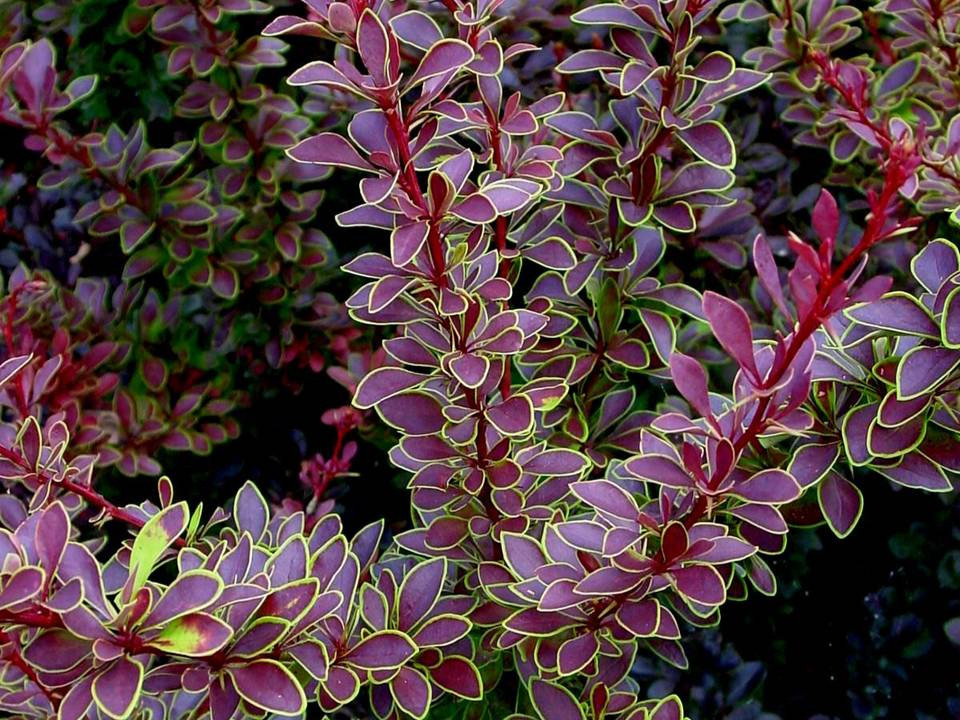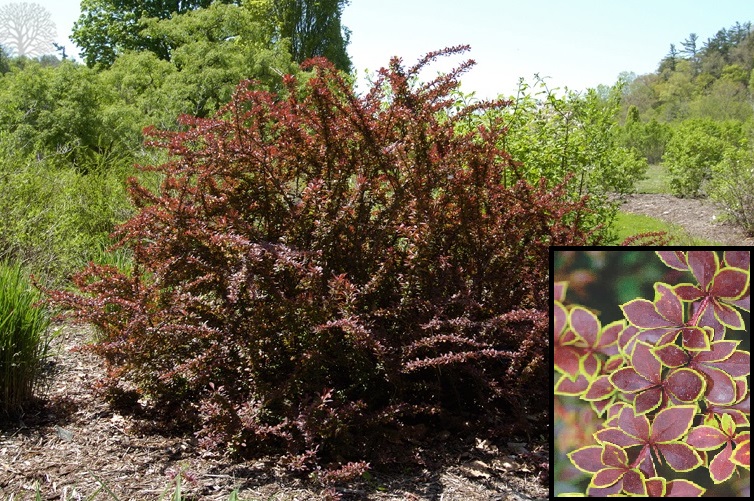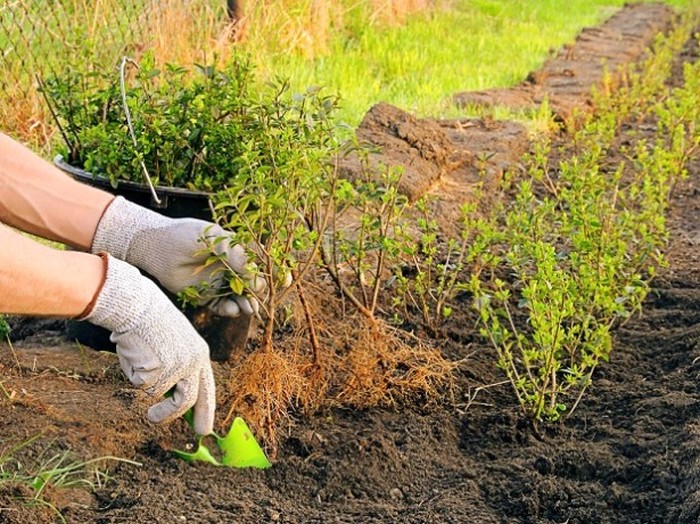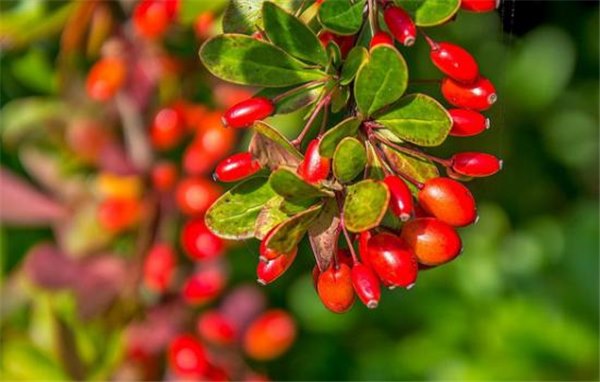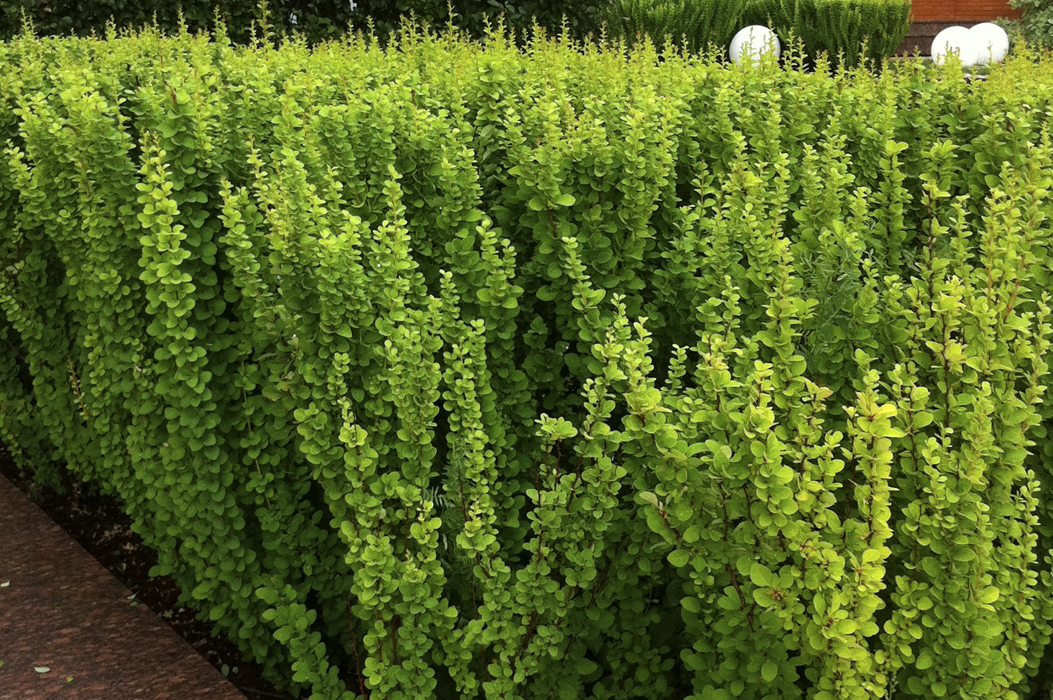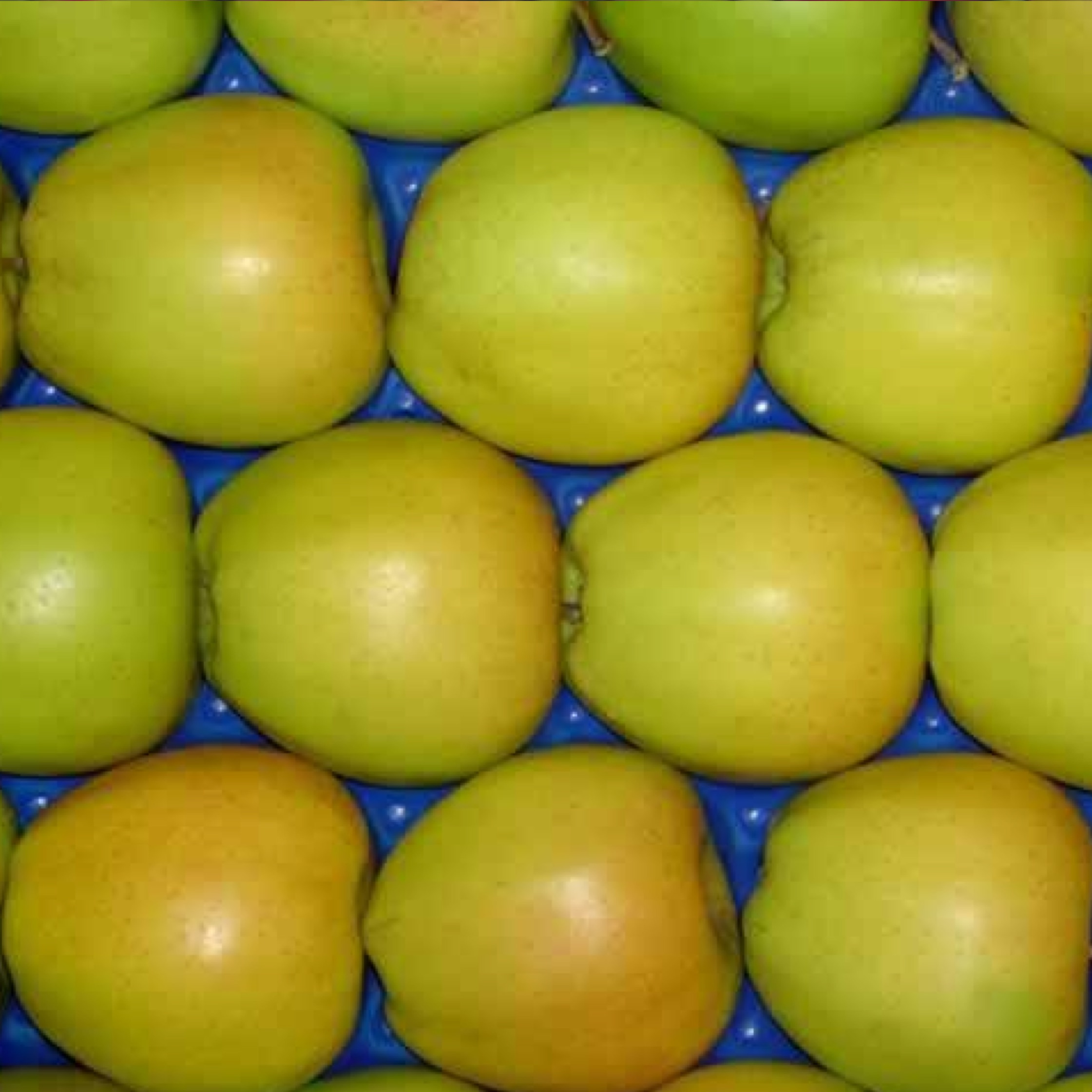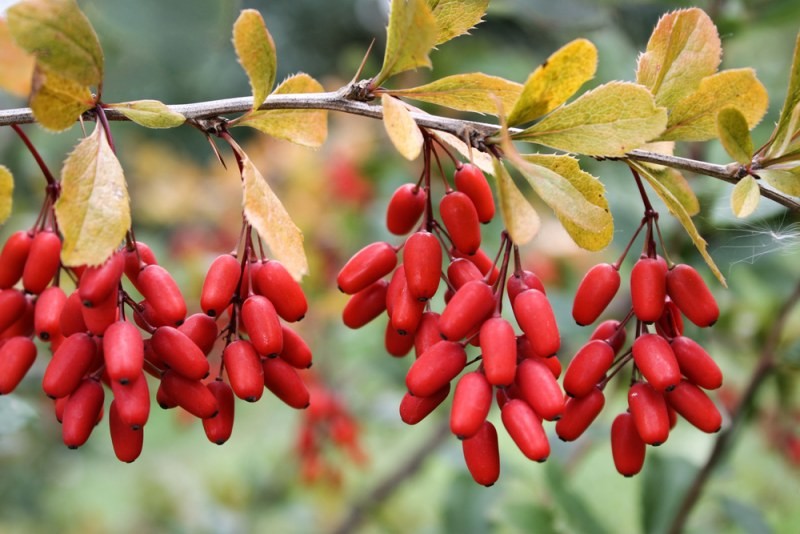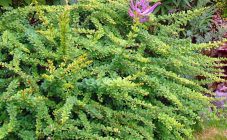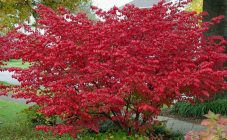There are many ornamental shrubs that are great and are widely used in landscape design. Some attract attention with an interesting crown shape, while others - with an original color of foliage. The latter include the Thunberg Golden Ring barberry.
History of creation
Barberry Thunberg Golden Ring (Golden Ring) belongs to the purple-leaved species and has much in common with their dark purple form. The main difference between the culture is the presence of an elegant edging of yellow-golden color along the edge of the leaf.
Barberry Golden Ring is optimal for planting in most climatic zones of our country. It has a good indicator of frost resistance and looks very dignified both as an element of a hedge and in curb groups. This variety of barberry looks no worse than in front gardens as a bright accent color.
The variety was bred in 1950 and almost immediately began to be used in the field of urban landscaping.
Characteristics of the variety
Golden Ring barberry does not acquire a combination of purple and yellow shades immediately, but as the leaf plate unfolds. Plant growth is moderate. If in summer the foliage of a shrub is closest to purple in color, with the onset of autumn it begins to acquire rich red tones. The name barberry of the Golden Ring variety gave a golden edging (ringlet) along the edge of each leaf.
The plant is a deciduous shrub with spines, quite spreading. Its crown can be up to three meters in diameter. The culture can reach a height of 2.5 meters. The maximum height is reached by the plant when it reaches ten years of age; for barberry Thunberg Golden Ring (as for any other barberry Thunberg) this is the norm.
The shrub begins to bloom around May. Its flowers are red-yellow, quite beautiful. The fruiting period of the plant, depending on the region of planting, falls on September or October. Barberry fruits are shiny oblong red berries that can be eaten. They have a lot of useful properties and are a real storehouse of vitamin C. If the berries are not picked, then they will easily keep on the branches until the beginning of winter.
Care features
The golden ring variety of barberry has a very attractive appearance. It can be successfully combined with both other varieties of barberry and other conifers. The result is a very interesting and spectacular flower bed that will attract everyone's attention.
Practice shows that the Golden Ring barberry is quite unpretentious in planting and care. It can be grown on almost any type of soil. But in order for the culture to grow as quickly as possible, bloom well and give a large number of fruits, it is better to make a choice in favor of fertile, loose and sufficiently moist soil. Such a soil will provide the plant with the necessary nutrition and development.
Both excess and lack of moisture negatively affect the plant.
The Gold landscape shrub grows much better in full sun. A shady landing site is unlikely to be the cause of the death of the barberry, but the beauty of the foliage will still not be what any gardener expects to see it.Plant Golden Ring, like other varieties of Thunberg barberry (for example, Horizon), should be either in the sun or in the shade, in places inaccessible to strong winds.
Barberry of any variety is susceptible to aphid attacks. In this regard, it is strongly not recommended to plant a crop next to plants that attract the attention of a harmful insect. First of all, we are talking about fruit crops, roses and viburnum. As an effective prophylaxis, it is recommended to treat the plant with insecticides in the spring.
It is allowed to plant a shrub both in autumn and spring. It is recommended to provide a hole of such a size that the root system fits in it without any particular difficulties. The exact size depends on the age of the seedling used for planting.
In order for the Golden Ring barberry to take root and grow as actively as possible, it will not be superfluous to add a certain amount of fertilizer. These can be ready-made mineral dressings purchased from a specialized gardening store. In addition, barberry responds well to the following top dressing: 100 grams of phosphate is bred in a bucket of humus and added to the ground.
Be sure to take care of the organization of drainage when planting. It is best done at the very bottom of the hole. For work, you will need broken brick, crushed stone or expanded clay. Sand can also be added to increase the airiness of the soil.
Planting the plant itself is done as follows. The roots of the plant are dipped into a pre-prepared hole, carefully straightened, covered with soil and watered abundantly. To maintain the moisture balance, the barberry must be mulched. This can be done with sawdust, peat, or straw.
Culture care consists in performing the following manipulations:
- weekly abundant watering;
- regular weed removal;
- loosening the soil around the bush (after each watering);
- top dressing (on average once a month);
- shrub formation and sanitization;
- insecticide treatment.
In most cases, it is not required to cover the plant for the winter, since one of the characteristics, according to the description of the variety, is winter hardiness.
Golden shrub reproduces in different ways:
- cuttings;
- seeds;
- layering;
- dividing the bush.
Each of the methods is convenient in its own way, the gardener will only have to choose the most suitable one from his point of view.
When propagating by seeds, it is necessary to select the most ripe berries, select seed material from their pulp and disinfect in a weak solution of potassium permanganate. After that, it remains only to thoroughly dry the seeds and plant them to a depth of about 1 cm. In the spring, after the emergence of young shoots, the shrub must be thinned out. You can plant seedlings in a permanent place when they reach the age of two.
To propagate barberry by cuttings, you will need a school or a greenhouse. Cuttings are usually harvested in early summer. The leaves from the cutting are almost completely removed, leaving only a few at the very top. The stalk should first be sent to a bucket with root solution. A few hours are usually sufficient to stimulate root formation. Planting cuttings should be done in moist soil. For the first couple of weeks, the humidity indicator should be monitored with a special degree of care.
Reproduction by layering is usually carried out in early spring.Immediately after the snow melts, you need to choose the strongest and healthiest shoots, put them in an earthen groove and fix them. It is important that the end of the shoot is always underground. The buried part can be slightly scratched. This will speed up root formation. In the fall, the seedling will be ready to be transplanted to a permanent location.
By dividing the bush, the Golden Ring variety is practically not propagated. It is more suitable for low-growing barberry varieties.
Advantages and disadvantages
Among the advantages of the variety are:
- unpretentious care;
- high resistance to low temperatures;
- the ability to grow in almost any soil;
- high decorative characteristics;
- the ability to fit into almost any landscape design.
There are practically no significant disadvantages of the Thunberg Golden Ring barberry. You can only name a large number of thorns, which somewhat complicate the care of the crop.
